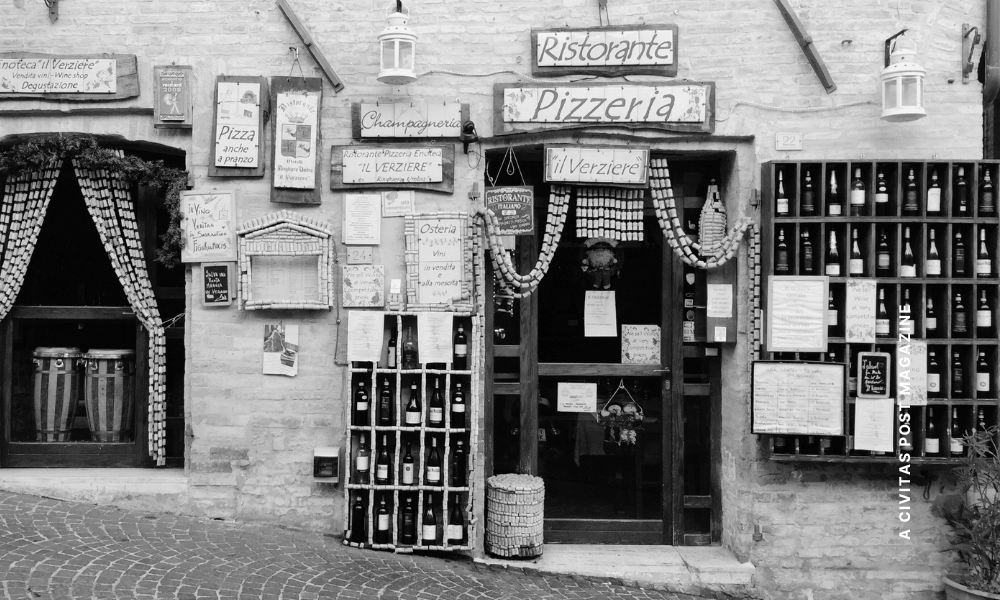The Italian Investor Visa has become one of the European Union’s most resilient and institutionally sound residency-by-investment pathways. Introduced in 2017 the Italian Investor Visa was reformed in 2020. The program offers a structured, government-backed route for non-EU nationals to gain long-term legal residence in Italy via qualifying economic contributions.
A strategic pathway to European Residency for global investors
For international investors seeking a strategic relocation
or tax-efficient residency in Europe, the Italian Investor Visa offers a
well-regulated and adaptable pathway. At a time when investment migration is
facing heightened regulatory scrutiny, Italy’s Investor Visa framework stands
out as it maintains a strict legal distinction from citizenship by investment
schemes, integrates strong anti-money laundering controls, and complements
Italy’s competitive flat-tax regime. This makes it both compliant with EU
standards and attractive to globally mobile high-net-worth individuals.
Why the Italian Investor Visa program matters in 2025
To put things into context Europe’s investment migration sector is undergoing a massive shift.
Many of the continent’s legacy “golden visa” schemes, particularly those tied to real estate, have faced regulatory and political backlash, prompting a series of program closures and restructurings:
- Portugal has formally removed real estate as an eligible investment class.
- Spain has announced the complete shutdown of its golden visa program.
- Ireland and the Netherlands have exited the space altogether.
- Malta became the subject of a landmark EU Court of Justice ruling in 2025, which found its citizenship-by-investment program to be incompatible with EU law.
Amid this shift and in the context of rising geopolitical tensions, Italy has risen in popularity as the ideal location for those exploring alternative residence programs.
Italy has established its position as one of the most compliant, sustainable, and strategically attractive gateways into the European Union. It is a strategic platform for investors and offers:
- Residency in an EU and G7 nation
- No minimum stay for renewals
- Visa-free mobility within the Schengen Zone
- A diversified investment menu including start-ups, corporate equity, and philanthropy
- Access to the €200,000 flat tax regime for new resident HNWIs
- Fully compliant with EU jurisprudence
- Family inclusion
- Pathway to future citizenship
For globally mobile clients, the Italian Investor Visa represents a combination of stability, transparency, and policy integrity, increasingly valuable attributes in today’s investment migration market. Moreover, as Italy imposes no quota limits on investor visas, high-net-worth individuals from the Americas, Asia, and MENA regions are increasingly using the program as a primary EU access strategy.
Who can apply for the Italian Investor Visa in 2025?
Italy does not require the investor to be physically present in the country before application. It also allows the applicant’s family; spouse, dependent children, and dependent parents to be included under the principal applicant’s residency permit once in Italy. Eligibility is open to all non-EU/EEA/Swiss individuals who:
• Are at least 18 years of age
• Have no criminal convictions
• Willing to make a qualifying investment or donation
• In possession of valid health insurance for Italy
• Capable of digitally signing application documents (via recognized EU e-signature providers)
• Are not citizens of Russia or Belarus (due to current EU-aligned sanctions)
Investment routes and capital thresholds
Applicants must commit to one of the following qualifying
investments:
Government bonds
Minimum Amount: EUR 2,000,000
Requirements: Hold for a minimum of two years
Strategic rationale: Liquidity injection into sovereign finance
Equity in Italian Company
Minimum Amount: EUR 500,000
Requirements: Capital injection into S.r.l or S.p.A
Strategic rationale: Business development and employment boost
Equity in Innovative Startup
Minimum Amount: EUR 250,000
Requirements: Must be registered as “innovative start-up” with Ministry
Strategic rationale: Encourages R&D tech and entrepreneurship
Philanthropic donation
Minimum Amount: EUR 1,000,000
Requirements: Donation to public interest initiatives (science, education, arts)
Strategic rationale: Non-profit and cultural sector enrichment
Important Conditions
- Only one investment type per application — no hybrid routes permitted
- No real estate investment permitted under any route
- Funds must be personally owned, readily available, and non-leveraged
- The investment is executed after the Nulla Osta is approved
Step-by-step guide to applying for an Italian Investor Visa

Successfully obtaining Italy’s Investor Visa involves a structured two-stage process overseen by the Ministry of Enterprises and Made in Italy (MIMIT) and coordinated via a dedicated online portal. While the investment is not required upfront, applicants must present credible documentation and a
legally binding commitment.
Step 1: Submit application (up to 3 months)
Applicants must upload:
- Completed application form at investorvisa.mimit.gov.it
- Passport
- detailed CV
- Bank statement showing sufficient funds fully owned (not leveraged)
- AML letter from bank (FATF compliant)
- Independent third-party verification (lawyer or accountant)
- Police clearance certificate from country of residence
- Proof of health insurance for Italy
- Signed Declaration of Commitment (digital signature required)
What is the Digital Signature?
Once the application is complete, the portal generates a Declaration of Commitment, which must be signed using a qualified digital signature recognized in Italy and the EU.
Qualified digital signatures must be obtained from accredited Italian or EU providers. International applicants can use identity-verified services such as ArubaSign or Infocert, available globally.
Upon submission, the application is reviewed by a government-appointed Interministerial Committee.
Document collection can vary case by case but could take 1-3 months. Once submitted the Interministerial Committee evaluates the investment’s viability, origin of funds, and applicant credentials.
If the application is complete, a decision is issued within 30 calendar days. If it is incomplete, the applicant is notified to submit further documents. The countdown pauses until resubmission. If approved, the applicant receives a Nulla Osta via the portal — a digitally issued certificate valid for six months and used to initiate the visa application at an Italian consulate.
Note: Funds must not be transferred or invested before obtaining the Nulla Osta. This protects applicants from financial exposure if their application is rejected
Step 2: Submit application (up to one week)
With the Nulla Osta certificate, the applicant proceeds to their local Italian consulate to apply for a Long-Stay D Visa. Required documents include:
- Original passport
- Nulla Osta certificate
- Originals of all submitted materials
- Visa application form
Once processed and approved, a Long-Stay Type D Visa is stamped into the applicant’s passport, allowing them to enter Italy and activate their investor status. If consular response times are delayed, applicants may contact the MIMIT Committee at investorvisa@mise.gov.it to escalate coordination with the consulate.
Step 3: Enter Italy and obtain permit (up to two weeks)
After arriving in Italy, the investor must apply for a residence permit (permesso di soggiorno) within 8 working days at the local immigration office (Questura) in their city of intended residence. This allows for family reunification and grants them the right to be employed. The initial permit is:
- Valid for 2 years
- Issued as a physical card (EU-format)
- Renewable for 3-year periods, contingent on maintaining the investment
Step 4: Complete the investment (within 90 days)
The clock starts ticking upon entry. The investor has three months to finalize the committed investment or donation; the residence permit remains valid through this period. They must upload confirmation to the government portal, including:
- Bank transfer receipts
- Ownership certificates, bond ownership documentation, or donation confirmations
- Any required regulatory documentation
Note: Failure to complete the investment within the 90-day window can result in the revocation of the permit. The investment must also be maintained throughout the validity of the permit.
Italian Investor visa renewals and residence

The initial Italian investor visa / residence permit is valid for 2 years. Renewal is contingent on two conditions:
- The original investment is still maintained (e.g. the startup or bond is not liquidated)
- The investor submits a renewal Nulla Osta request through the online portal
Upon approval, a 3-year residence permit is granted. There is no limit on how many times the permit can be renewed, provided the investment remains valid.
After 5 years of continuous legal residence, the investor becomes eligible for an EU long-term residence permit (permesso di soggiorno UE per soggiornanti di lungo periodo), which grants:
- Permanent residency rights in Italy
- Mobility and work rights in other EU Member States (subject to local rules)
- No further investment requirements
Note: Applicants must register as residents at the local municipal office (comune), demonstrate sufficient income, pass an A2-level Italian language test, and prove stable accommodation.
Italy's flat tax regime
As of August 2024, Italy raised its flat tax for new residents to EUR 200,000 per year on all foreign-source income, replacing the earlier EUR 100,000 Italian HNWI tax regime.
|
Feature |
Description |
|
Annual Tax |
EUR 200,000 (foreign income only) |
|
Family Add-On |
EUR 25,000 per dependent |
|
Duration |
15 years (renewable annually) |
|
Eligibility |
Not tax resident in 9 of the last 10 years |
|
Benefits |
Exempt from wealth tax, gift/inheritance tax on foreign |
Note: Individuals who opted into the flat tax before August 2024 may continue under the €100,000 regime subject to meeting requirements.
Pathway to Italian citizenship
Italy does not offer citizenship by investment though to date many of the Italian diaspora had been obtaining citizenship through the Italian citizenship by descent route. However, after 10 years of legal residency — with proven integration and adherence to compliance requirements an investor may apply for citizenship by naturalization. The naturalization approval process is highly regulated, with processing times averaging 1–2 years. Requirements Include:
- Legal residence for 10 full years (renewed continuously)
- Submission of income tax returns
- A B1 level Italian language certificate
- Proof of integration and “good conduct”
- No prolonged absences from Italy
Note: Dual citizenship is permitted for Italian passport holders.
Why Italy stands strong after the EC ruling on Malta
While the 2025 ruling C-181/23 by the EU Court of Justice formally declared the Malta Citizenship by Naturalisation for Exceptional Services by Direct Investment program, incompatible with EU law the decision has not been
without controversy.
Many debate that nationality remains a sovereign competence of Member States and that structured investment-linked citizenship frameworks, when implemented with robust due diligence, as Malta had incorporated in their program, should not be automatically equated with commodification.
Nonetheless, the ruling effectively marked the end of direct “citizenship by investment” models within the EU, reinforcing the bloc’s insistence on genuine residence, integration, and long-term ties as prerequisites for nationality.
In this context, the Italian Investor Visa which is firmly rooted in residency, not citizenship has emerged as a legally sound and future-proof alternative within the EU framework, its main features:
- No direct link between investment and nationality
- 10-year minimum physical residence for citizenship
- Full due diligence and AML protocols
- No real estate investment options that drive speculation and inflation in prices
A unique European gateway
The Italian Investor Visa is no longer a niche program, it is now one of the most legally resilient and globally relevant immigration routes in the EU. Below we showcase a handful of popular golden visas and investor visas and their headline terms:
Italy Investor Visa
Investment Route: Business shares, start-ups, bonds, donations
Citizenship Pathway: After actual residence physically – 10 years
Physical Presence: Not mandatory to renew the Investor Visa (but required for applicants seeking citizenship long-term)
Real Estate Investment: Not possible as an eligible direct investment route
Tax Regime: Italian HNWI Tax Regime – EUR 200,000 Flat Rate
Portugal Golden Visa
Investment Route: Funds (not real estate funds), company, donation
Citizenship Pathway: After five years with the Golden Visa
Physical Presence: Not mandatory to renew the Golden Visa or apply for citizenship
Real Estate Investment: Not possible even via RE funds
Tax Regime: IFICI may apply
Note: NHR phased out. NHR 2.0 subject to conditions. IFICI replaced NHR.
Spain Non Lucrative Visa
Investment Route: EUR 28, 800 (EUR 7,200 per dependent)
Citizenship Pathway: After actual residence physically – 10 years (fast-track for certain Spanish speaking passport holders)
Physical Presence: Mandatory 183 days + to renew NLV (also required for applicants seeking citizenship long-term)
Real Estate Investment: Not relevant
Tax Regime: None applicable for NLV holders
Note: Golden Visa phased out 2025
Greece Golden Visa
Investment Route: Real estate (threshold is location dependent), companies, bonds
Citizenship Pathway: After actual residence physically – 7years
Physical Presence: Not mandatory to renew the Golden Visa (but required for applicants seeking citizenship long-term)
Real Estate Investment: Permitted and minimum amount depends on location of real estate
Tax Regime: EUR 100,000 flat tax on foreign income
Note: Also available is the 7% flat tax for foreign pensioners or 50% income tax exemption for new workers/business owners (subject to requirements)
The Italian Investor Visa is more than a pathway to residence, it’s a bridge to Europe, a base for global tax optimization, and a foundation for family relocation or succession planning.
As EU policy shifts and other countries restrict access, Italy continues to offer a detailed application process and low entry barriers. It grants visa holders Schengen mobility and has the added benefit of not needing physical presence for renewals to be valid. For those interested in naturalizing the path is based on real presence with limited absences.
Whether the end goal is wealth preservation, lifestyle diversification, or EU market access, the Italian Investor Visa remains one of 2025’s most viable solutions.








